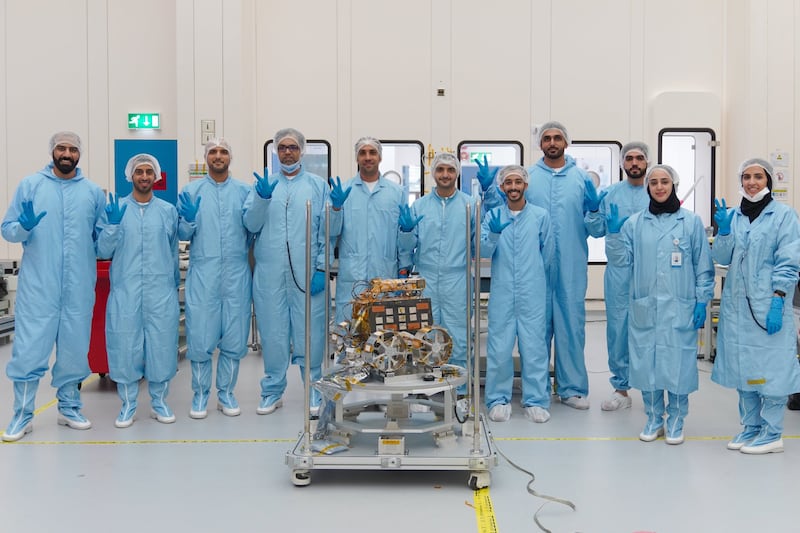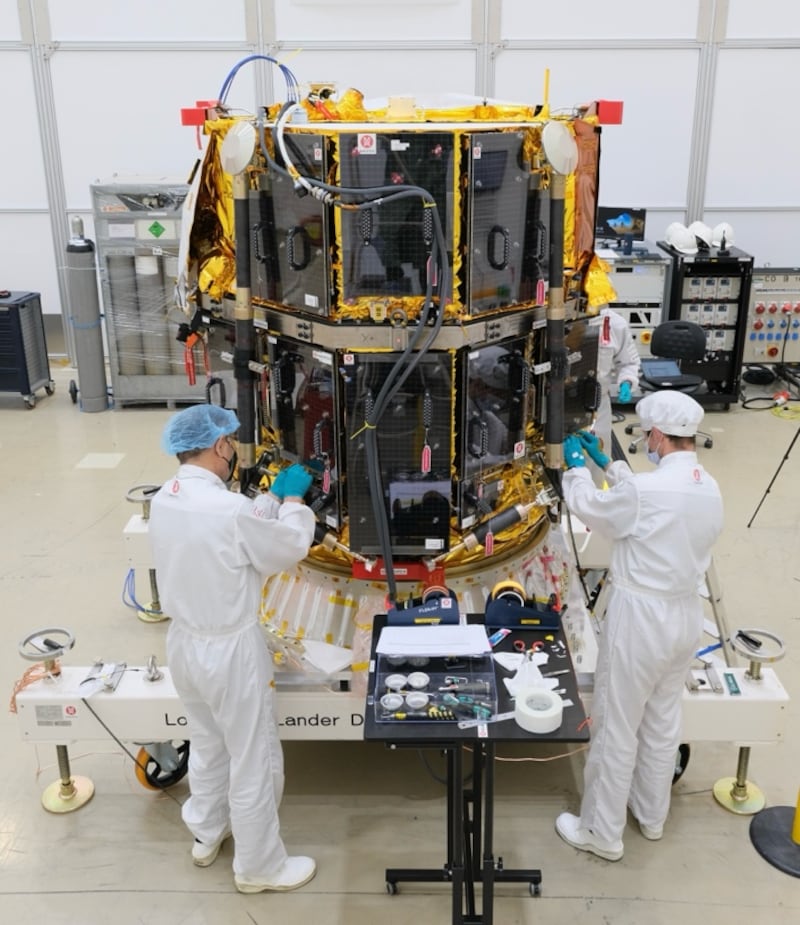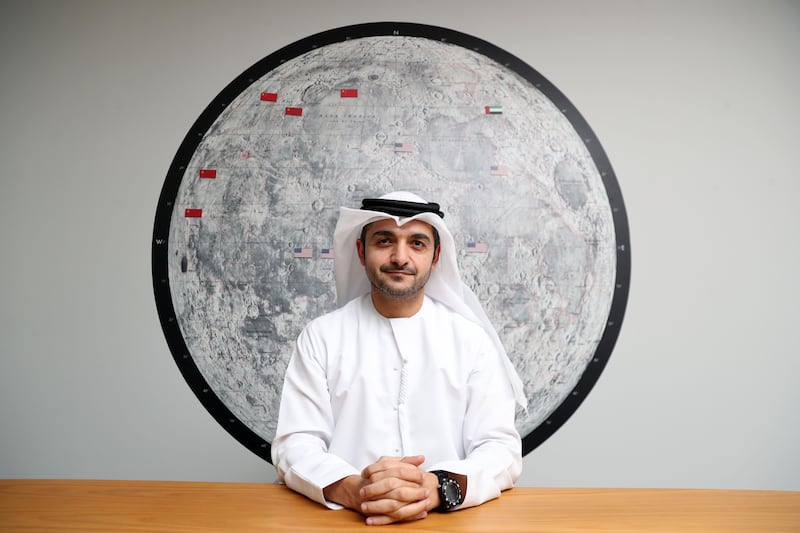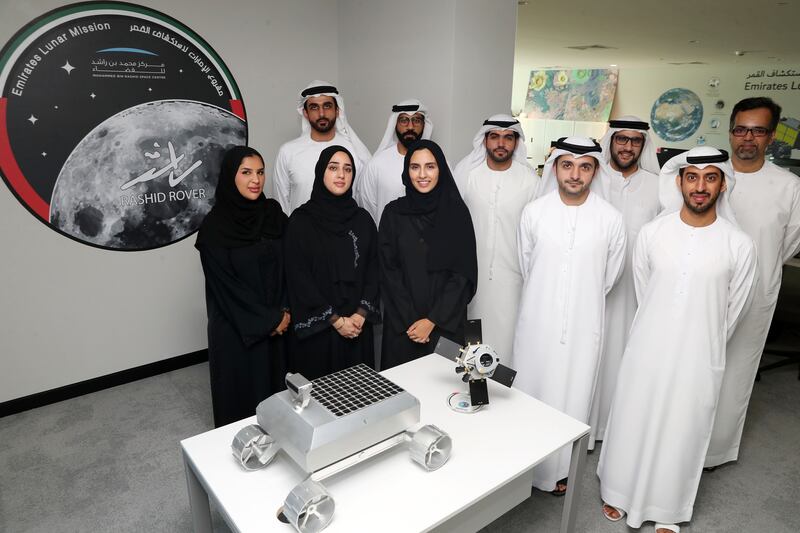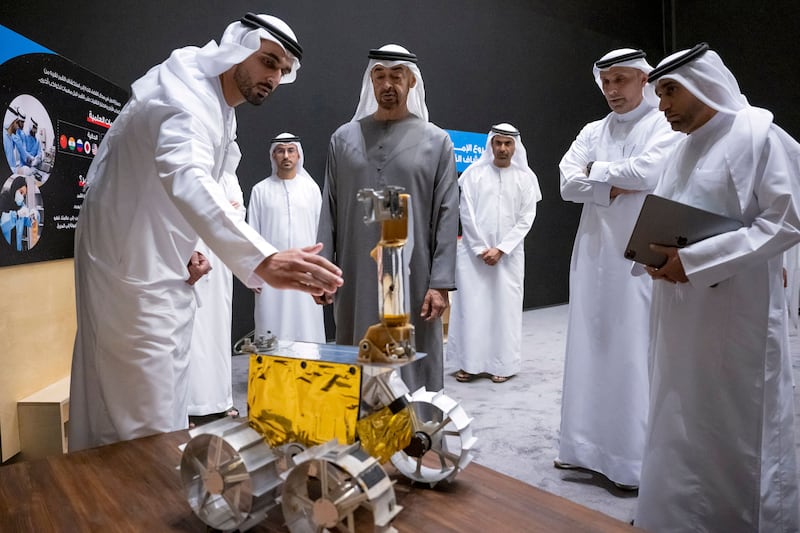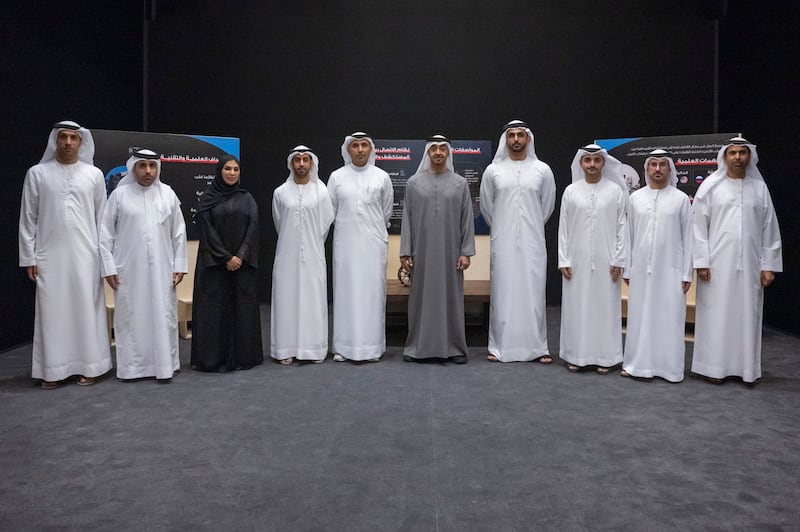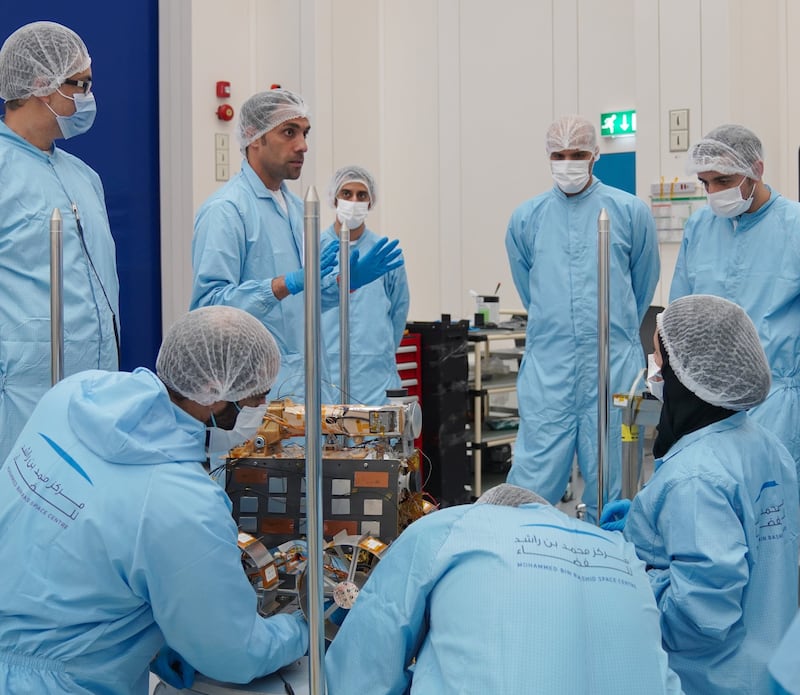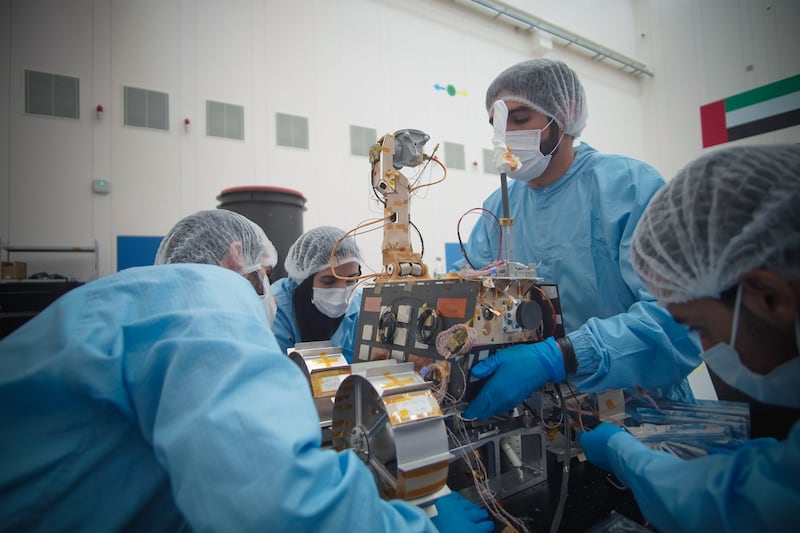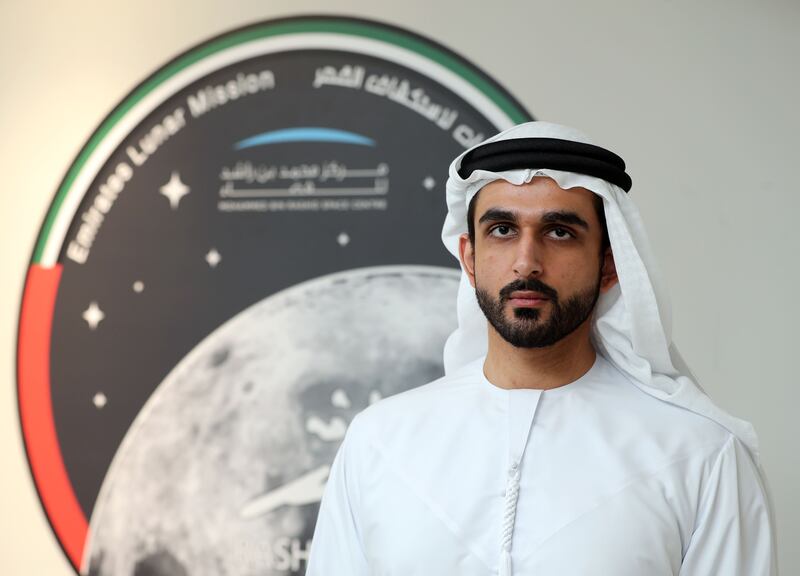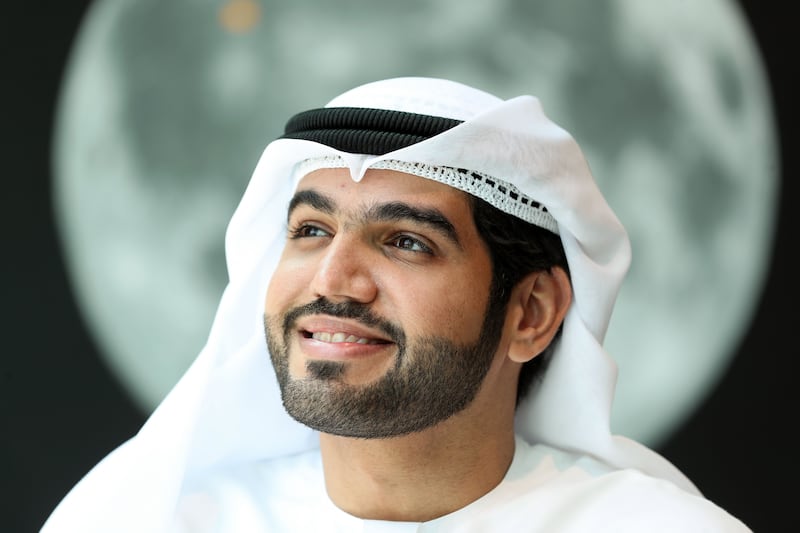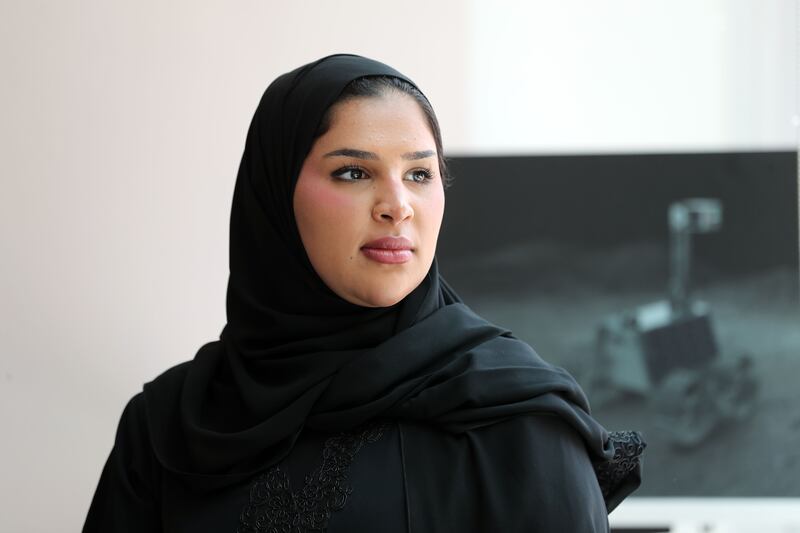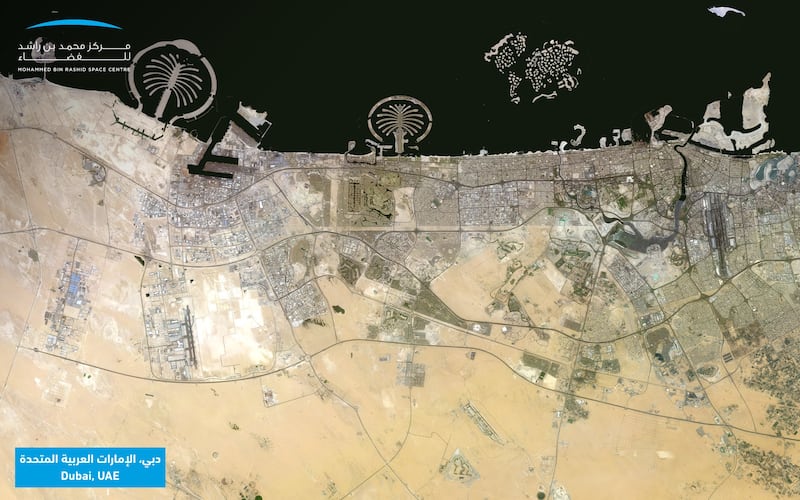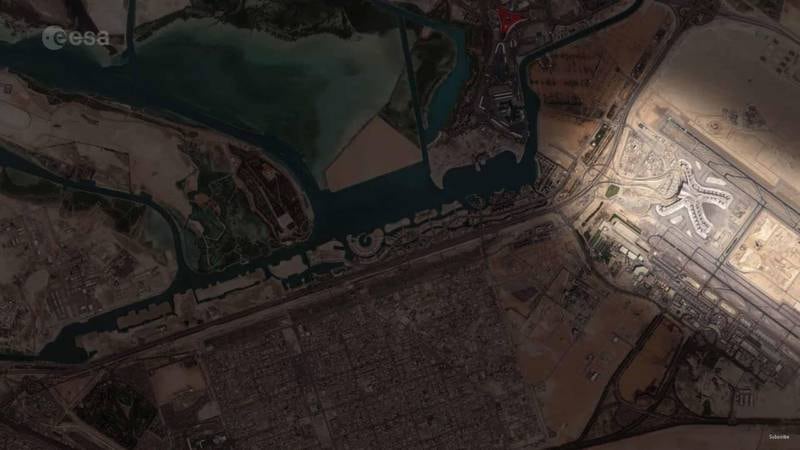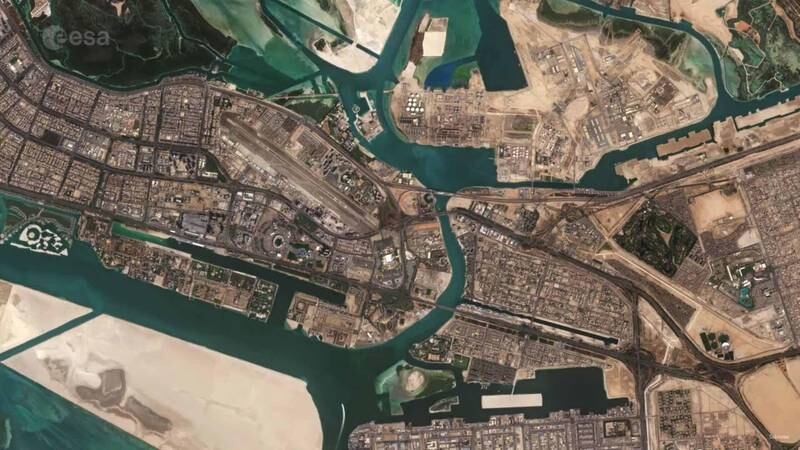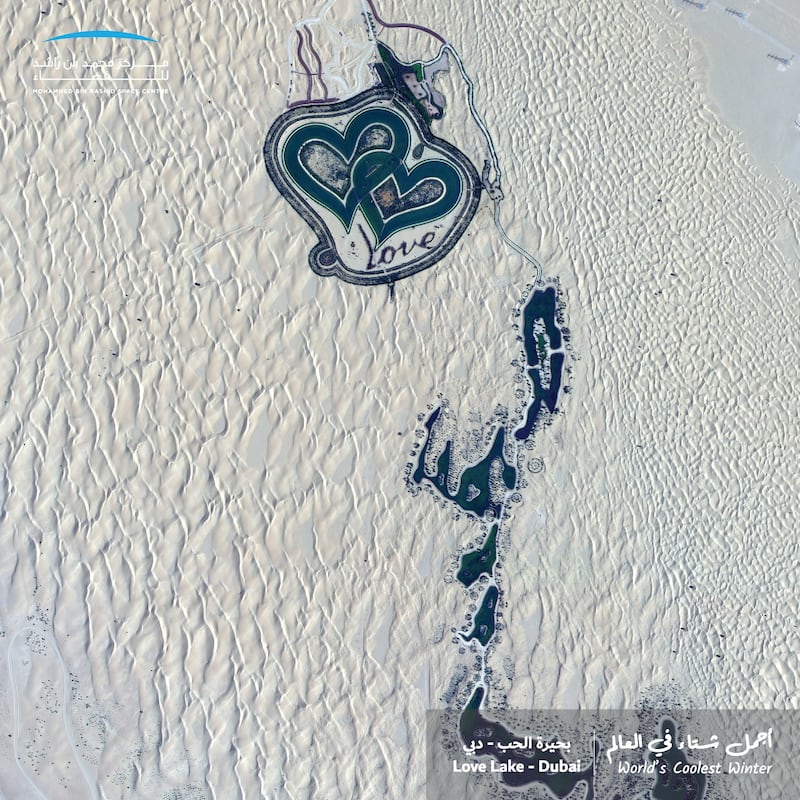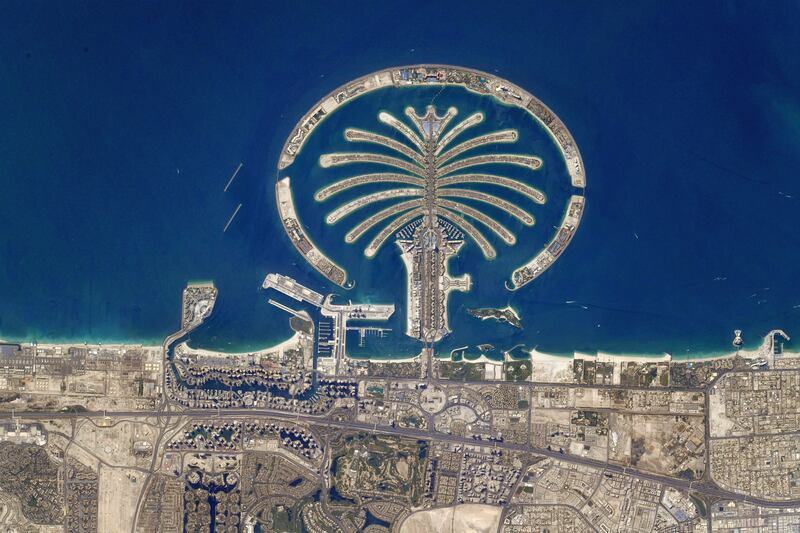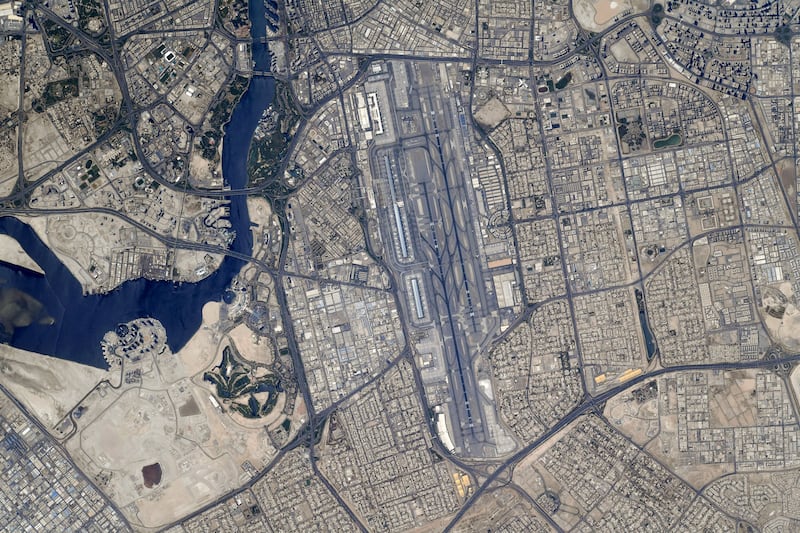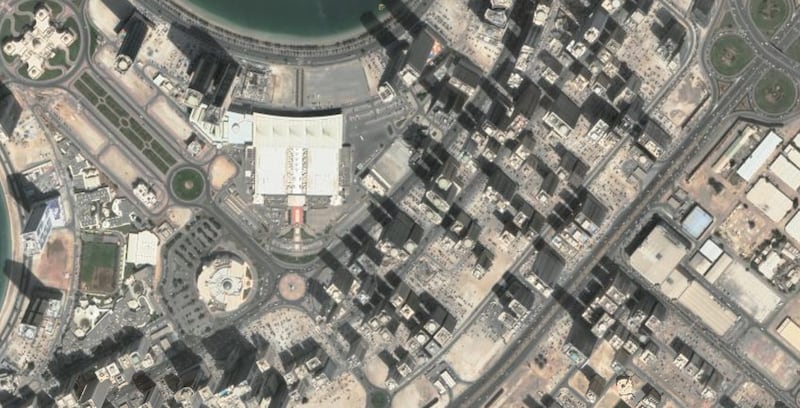The lander that will be carrying the UAE’s Rashid rover to the lunar surface will soon be shipped to the launch site in Florida for lift-off in early November.
Rashid, a 10-kilogram rover, is safely stored inside the Hakuto-R Mission 1 (M1) lander, built by a Japanese company called ispace.
The National revealed the launch window of November 9 to 15 last month, which ispace officially announced on Wednesday.
The mission is expected to launch from a spaceport in Cape Canaveral on board a SpaceX Falcon 9 rocket.
Sheikh Hamdan bin Mohammed, Crown Prince of Dubai, praised the efforts of engineers at the Mohammed bin Rashid Space Centre, who developed the mission.
"We thank the team at MBR Space Centre for their efforts in developing the Rashid Rover, the UAE’s first mission to the Moon," he tweeted.
"The rover has officially cleared all required tests, bringing the first Arab mission to the lunar surface one step closer. Our next stop: the Moon."
Takeshi Hakamada, founder of ispace, said that they were ready for the mission now that a launch window has been set.
“For me this is a milestone on the road to realising our vision, but I am already proud of our results. I look forward to watching the launch alongside all of our employees and those who have supported us," he said.
Preparations for the launch
Ispace said that the lander is now being prepared for transport to the launch site.
It had been undergoing final functional testing at the IABG mbH Space Centre in Germany, which was completed successfully.
The lander is carrying multiple government and commercial payloads to the surface of the Moon, including two rovers.
Once it lifts off, the lander will be operated from the Hakuto-R Mission Control Centre, located in Tokyo’s central business district called Nihonbashi.
Timelapse footage shows how the UAE's lunar rover was built
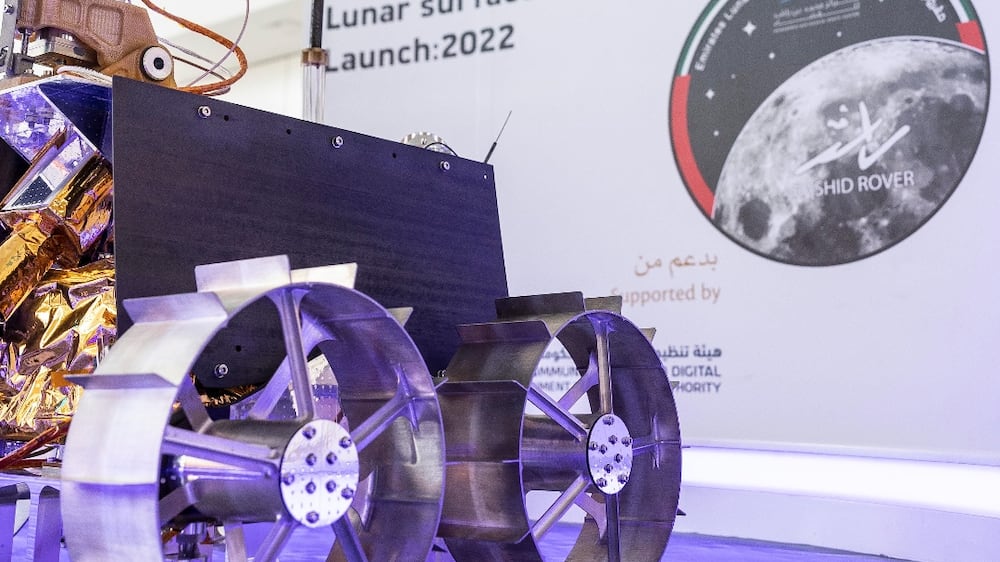
Mission control will monitor the lander’s attitude (orientation), temperature and other conditions, as well as send commands and data to the lander, receive images and video data during its three-month journey to the Moon and from the surface.
ispace will also be using the European Space Agency's Tracking Station Network in Germany to track the lander.
It will utilise the network's antennas across three continents, including in French Guiana's Kourou, New Norcia in Western Australia, Cebreros in Spain, Malargue in Argentina and Goonhilly in the UK.
Emirati engineers will also be able to track the rover's health during the journey, and once it touches down on the lunar surface.
Landmark mission for the UAE, Japan and commercial space industry
The Rashid rover is the Arab world's first lunar mission and paves the way for the UAE's long-term Moon exploration programme.
The country is already developing Rashid 2, the second rover under the programme, which will be launched by China in 2026.
This will also be the first time a Japanese spacecraft lands on the Moon, if all goes as planned.
This mission is also on track to become the first commercial mission to the Moon.
The company has ambitious plans to undertake several Moon missions and to have 1,000 people living in a Moon colony by 2040.
Not only is the Mission 1 lander carrying government and commercial payloads, it is also contracted by Nasa to acquire lunar material and sell it to the space agency.
The company received an interim payment under the transfer contract last month.
ispace's second mission under the Hakuto-R programme is called Mission 2 and is scheduled for a 2024 launch.
